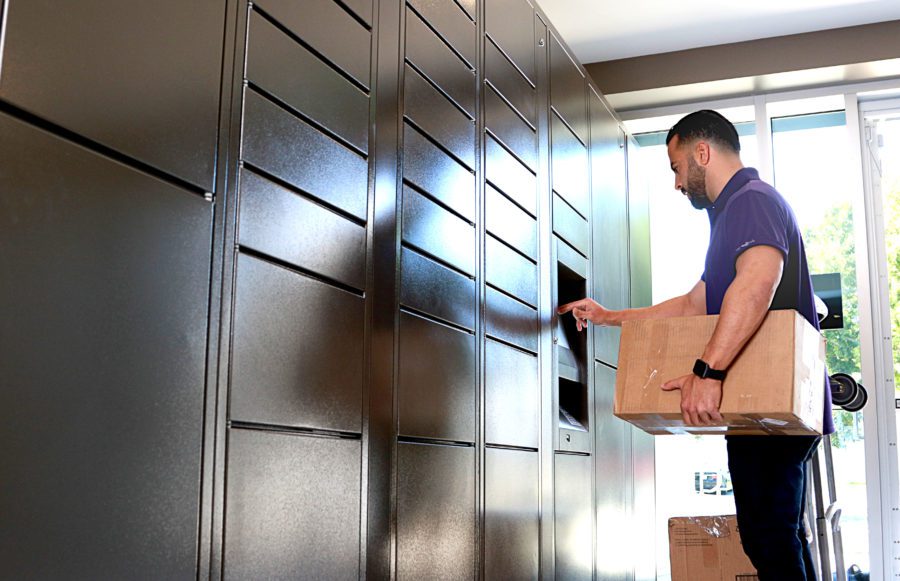
Commercial
Why Effective Communication in the Workplace Matters
Written by: Parcel Pending
6 Min Read
Published: October 25, 2023
Updated: October 26, 2023
Good communication in the workplace is a critical ingredient to success. We often focus on improving communication with clients and customers, but less time is spent talking about internal communication – i.e., communicating with colleagues, staff, and management in the workplace. Like most skills and mindsets, workplace communication can be taught and encouraged, but internal communication skills are also something that we have to work on and practice if we want it to improve.
What is workplace communication?
Workplace communication is any type of communication that happens at work, about work.1 It includes the verbal communication and non-verbal communication we have with clients, colleagues, staff, and bosses. Like any skill, there are ways of practicing open communication better individually and at the group level.
Knowing when and how to communicate effectively can help reduce misunderstandings, increase team happiness, bolster collaboration, and foster trust.2 When situations get complicated, teams that communicate effectively are much better at coping and working through complex issues or problems than teams with poor communication skills.
Communication in the workplace happens in many different ways: face-to-face in 1:1 feedback sessions or team meetings, through emails, chats and instant messages, or over video conferencing platforms like Zoom, Teams, or Google Meet.
It also includes customer-facing communication as well as company announcements, presentations, leadership communication, and project or work status updates designed to share information with a large group of colleagues and co-workers.
Why is workplace communication important?
We often take effective workplace communication for granted, but it impacts all areas of a business, from interpersonal relationships to productivity to company culture.3 When we exchange messages and information efficiently and clearly, we increase the chances of generating positive outcomes as well as greater efficiency and productivity in the workplace.
Paying more attention to the benefits can help us become more proactive at seeking thoughtful and innovative ways to improve our communication skillset. Here are some of the ways that effective workplace communication can make a big difference4:
- More employee engagement: Effective communication makes employees feel heard, valued, and appreciated. They are more likely to contribute and feel that their work is making a difference, which are strong contributors to employee satisfaction and employee engagement.
- More productivity: Meaningful workplace communication brings teams together and helps ensure that they are aligned around common goals. This leads to significant improvements in productivity and effectiveness.
- More retention: Holding onto employees and customers can be a challenge. Good communication is a critical component in helping to support and increase employee and customer commitment.
- More positive morale: When employees understand how their work contributes to the organization’s purpose and goals, they are more likely to feel enthusiastic about their work and proud of their role in the company’s mission.
- More healthy workplace culture: Improving the quality of communication between senior leadership and employees helps build a more robust and healthy workplace culture.
Tips and tricks to improve workplace communication
The quality of workplace communication has a significant effect on employees and customers. Doing it right can be tricky and often complicated. But being a good communicator is a learned skill for individuals and companies. The more we practice thoughtful workplace communication, the more our communication skills will improve.
Here are some tips and tricks for successful workplace communication:
Choose the right communication tool
What will work best in the situation – an instant message, email, face-to-face meeting, etc.? The goal is to achieve the communication objective and get the message out using the communication channel or tool that best meets the needs of both the sender and the receiver.5
Questions to ask yourself: Which tool is best for your question or comment? Does the recipient have a preferred form of communication? Do you need an immediate answer, or can you send an email and wait for a response?
Listen
Most people think communicating depends on talking or writing clearly but active listening is equally, if not more, important – and for many of us, the harder task. Don’t forget that communication goes both ways. This means that listening is just as important as talking!
Practices to implement: Listen to understand rather than to reply. Ask clarifying questions if needed. Paraphrase or summarize the thoughts of the person you are talking with to ensure you fully understand what they’re telling you.
Collaborate
More collaboration typically leads to better communication. Collaboration is the bedrock of effective teamwork, and improving collaboration has a direct impact on a team’s ability to communicate effectively.6
Practices to implement: Practice more open and honest communication and learn how and when to disagree. Practice working through differences in opinion to get closer to achieving mutually desirable outcomes.
Use the right body language
Communication isn’t just what you say, it’s how you say it and how you appear to others when speaking.
Practices to implement: Pay attention to your tone of voice and body language. Be sure to relax your body and control facial expressions to avoid giving off unintentional cues, especially during difficult or sensitive conversations.
Speak to the right person
Who you’re talking to is just as important as what you’re saying. Poor communication often occurs when talking to the wrong person or delivering information in the wrong setting.7
Questions to ask yourself: Are the right people in the room and receiving your message? If you need help deciding who to speak to, ask a trusted colleague or a stakeholder with more experience.
Stick to the facts
Communicating information based on facts rather than interpretation or conjecture will help you and your colleagues solve problems more quickly and efficiently. Working with facts leaves less room for speculation.
Practices to implement: Separate stories from feedback and evidence and avoid acting on “things you have heard” until you can validate the stories with some hard facts.
Provide positive feedback
Employees are more likely to feel proud and encouraged if they receive positive, constructive feedback and communication.
Practices to implement: When it is time to give criticism, make sure it is constructive and try to be direct and emotion-free. When an employee does a good job, offer some positive reinforcement to acknowledge a job well done or an insightful contribution.
Communicate in person
Though it isn’t always possible, face-to-face communication is the most effective way to avoid any potential miscommunications.
Practices to implement: For important conversations or complex topics, meet in person whenever possible. Otherwise, try to communicate via video conference technology, a phone call, or other innovative office technology solutions.
Measuring communication in your workplace
Workplace communication should be a critical concern at all levels of a business. For senior management and staff it can set the “tone” and also serve as a valuable tool to measure the “pulse” inside the organization.8 Set objectives and evaluate the effectiveness of different communication platforms and messaging based on employee retention and turnover rates.
Check-in with your employees weekly or monthly, and encourage them to participate in regular 1:1s and casual company events. Administer engagement surveys regularly and build an employee recognition program to acknowledge the hard work of individual team members. Remember that workplace communication can be used as a team building tool, to find out how employees feel about the work they do and the company they work for.
To find out more about how our parcel locker, electronic locker, and commercial locker solutions can help deliver MORE for your employees, contact a Parcel Pending representative today.
Sources:
- Martins, J. 12 tips for effective communication in the workplace. www.asana.com. November 24, 2022. https://asana.com/resources/effective-communication-workplace
- Ibid.
- Indeed.com. The Components of Effective Workplace Communication. www.indeed.com. September 7, 2022. https://www.indeed.com/career-advice/career-development/components-of-effective-workplace-communication
- Energage. The Importance of Effective Workplace Communication. www.topworkplaces.com. November 7, 2022. https://topworkplaces.com/why-effective-workplace-communication-matters/
- Pena, B. 5 Tips for Effective Workplace Communication. www.entrepreneur.com. January 7, 2022. https://www.entrepreneur.com/leadership/5-tips-for-effective-workplace-communication/402778
- Martins, J. 12 tips for effective communication in the workplace. www.asana.com. November 24, 2022. https://asana.com/resources/effective-communication-workplace
- Ibid.
- Ibid.



